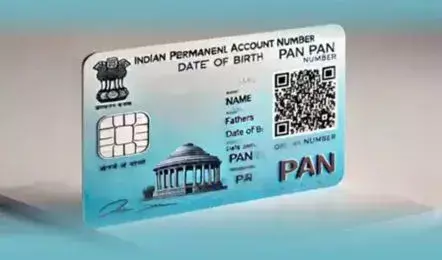
PAN 2.0: Key Features of the New Digital System
The Indian government has taken a significant step towards modernizing taxpayer identification with the approval of the PAN 2.0 project by the Union Cabinet. With a budget of ₹1,435 crores, this initiative aims to introduce a seamless and secure tax experience for taxpayers. In this blog post, we will explore the key features of the new digital system, including a unified digital portal, QR-enabled PAN cards, and centralized data management.
Unified Digital Portal
One of the primary features of PAN 2.0 is the introduction of a unified digital portal. This portal will serve as a single-window interface for taxpayers to manage their PAN-related activities, including PAN application, status tracking, and card printing. The portal will be designed to be user-friendly, making it easier for taxpayers to navigate and access their PAN-related information.
The digital portal will also enable taxpayers to apply for a PAN online, which is expected to reduce the processing time and eliminate the need for physical visits to PAN service centers. This will not only save time and effort for taxpayers but also reduce the workload of PAN service centers.
QR-Enabled PAN Cards
Another significant feature of PAN 2.0 is the introduction of QR-enabled PAN cards. These cards will have a unique QR code that contains the PAN details, making it easy to verify the PAN number. The QR code will also enable taxpayers to access their PAN-related information and make payments online.
The QR-enabled PAN cards will make it easier for taxpayers to comply with tax regulations, as they will no longer need to carry physical PAN cards. Moreover, the QR code will reduce the risk of PAN card loss or theft, as taxpayers will be able to access their PAN-related information online.
Centralized Data Management
PAN 2.0 will also introduce centralized data management, which will ensure that all PAN-related information is stored in a single database. This will enable the tax authorities to track and manage PAN-related data more efficiently, reducing the risk of errors and discrepancies.
The centralized data management system will also enable the tax authorities to share PAN-related information with other government agencies, facilitating the exchange of information and reducing the risk of tax evasion.
Faster Processing and Enhanced Security
The PAN 2.0 system is designed to provide faster processing and enhanced security for taxpayers. With the introduction of a digital portal and QR-enabled PAN cards, taxpayers will be able to access their PAN-related information and make payments online, reducing the need for physical visits to PAN service centers.
The centralized data management system will also enable the tax authorities to track and manage PAN-related data more efficiently, reducing the risk of errors and discrepancies. Moreover, the QR code on the PAN card will provide an additional layer of security, making it difficult for unauthorized individuals to access PAN-related information.
Cost Efficiency
PAN 2.0 is expected to provide cost efficiency for taxpayers and the tax authorities. With the introduction of a digital portal and QR-enabled PAN cards, taxpayers will no longer need to incur the costs associated with physical PAN card applications and renewals.
The centralized data management system will also reduce the workload of PAN service centers, enabling them to focus on more critical tasks and reducing the need for additional infrastructure and resources. This will result in cost savings for the tax authorities and enable them to allocate resources more effectively.
Conclusion
PAN 2.0 is a significant initiative by the Indian government to modernize taxpayer identification and provide a seamless and secure tax experience for taxpayers. The key features of the new digital system, including a unified digital portal, QR-enabled PAN cards, and centralized data management, are designed to provide faster processing, enhanced security, and cost efficiency.
With the introduction of PAN 2.0, taxpayers can expect a more streamlined and efficient tax compliance process, reducing the need for physical visits to PAN service centers and enabling them to access their PAN-related information online. The tax authorities will also benefit from the centralized data management system, which will enable them to track and manage PAN-related data more efficiently and reduce the risk of errors and discrepancies.
For more information on PAN 2.0 and how to apply online, please visit the following URL: https://ascendants.in/events/pan-card2-0-apply-online-eligibility/
Source: https://ascendants.in/events/pan-card2-0-apply-online-eligibility/






